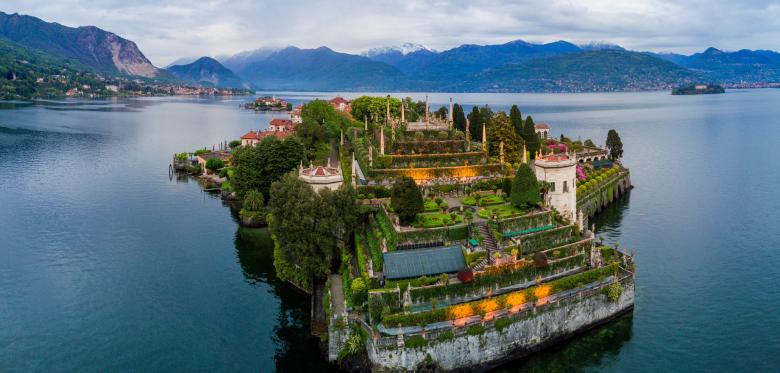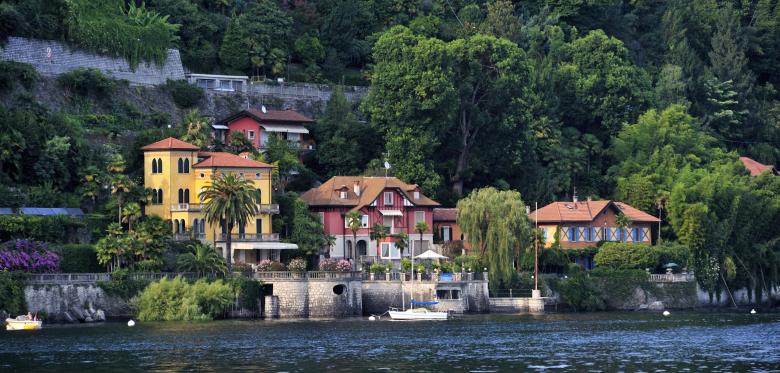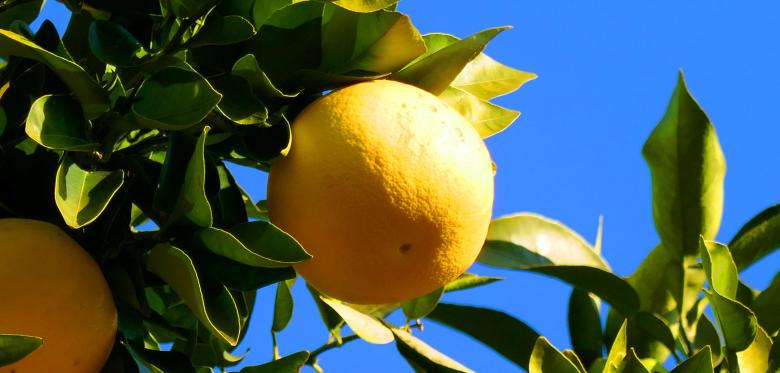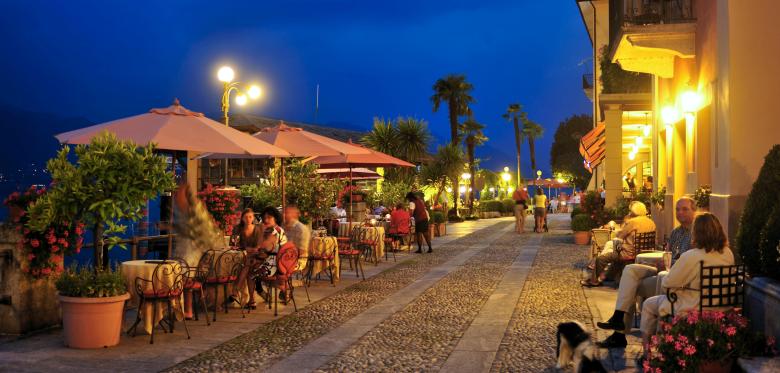On the western side of Lake Maggiore, the climate is particularly mild. Here palm trees flourish, but also the northernmost oranges and lemons of Italy. The area near Cannero is also called golden coast.
“Do you know the land where the lemons are blooming, / In the dark foliage the gold oranges glow, / A gentle wind blows from the blue sky, / The myrtle stands still and high the laurel? / Do you know it well? “None succeeds like Johann Wolfgang von Goethe to describe the typical desire for Italy.
In his educational novel “Wilhelm Meister’s Apprenticeship”, Goethe puts these words into the mouth of his Italian- born character Mignon. Many of his readers share this feeling and would like to leave for Bella Italia as soon as spring arrives.
As we read the verses, we see glowing lemon and deliciously sweet orange groves in our mind’s eye. In fact, most of them probably wander to Sicily or to the Amalfi Coast in the southernmost regions.
Less well known is the large variety of citrus fruits in the northernmost tip of Italy in Cannero Riviera. Even though Goethe himself was never on Lake Maggiore during his extended journeys to Italy , it is in this literary work that very lake to which Mignon longs to return.
Fruits shine against the blue of Lake Maggiore

Cannero Riviera invites you to enjoy the luminosity, colors and scents of Italy’s northernmost citrus fruits. Across Europe, Cannero Riviera is the northernmost place where lemons grow outdoors all year round. It is also the only place on Lake Maggiore where citrus fruits survive out in the soil all year round.
This is due to the particularly mild microclimate of the place. Even in winter, temperatures rarely fall below freezing. The plants are protected to the north by the mountains behind, and Cannero is a particularly sunny place. The coast of Cannero is therefore called costa d’oro , golden coast.
On the Borromean Islands in Lake Maggiore, especially on the Isola Madre, citrus plants are cultivated in pots. For wintering, they are brought to Orangerien. Presumably, the citrus fruits came from there to Cannero Riviera: Originally, they were plants of the rich and noble.
On Isola Bella, the Palazzo Borromeo since 1643 housed the noble Borromeo family – and their lemon trees. It is believed that a gardener from Cannero, who worked there, discovered the plants in the garden of his reign and took offspring to Cannero.
The fruits thrive in radiant colors against the blue waters of Lake Maggiore. The best travel time is in spring. Due to the cold temperatures of the past winter months, the fruits have then adopted their intense color, from which already enchanted Goethe.
Garden lovers are drawn to Cannero Riviera

At the height of flowering, in the streets of Cannero, the beguiling scent comes true. Even the noblest Milanese perfumery can not compete with that. In addition to the praised by Goethe lemons and oranges can be found thanks to this special microclimate in the beautiful village of Cannero mandarins, grapefruit, bitter orange, chinottos, limes, kumquats, bergamot, the native Zedratzitrone “Canarone”, which derives its name from its place of origin Cannero Riviera, and the probably most famous and at the same time most bizarre Zedratzitrone “Buddha’s hand”.
From 9 to 17 March 2019, the picturesque Cannero Riviera with its gardeners invites you, as every spring, to a citrus fruit exhibition. While the first passing brimstone butterflies bring a smile to the locals, every year numerous garden lovers travel to the “Mostra degli Agrumi” near the Swiss border.
There are many things to discover in two exhibition venues: At a scientific exhibition in the rectory, the organizers will be presenting one to two fruits of the trees from the various gardens in the village. An Italian woman who speaks German will also be available to answer questions.
The second exhibition is dedicated to a different fruit every year. In 2019, the photo exhibition will focus on the blood orange “Tarocco” and an exchange project between students in the communities of Cannero Riviera and Lentini (Syracuse province) in Sicily. The two communities are connected by this orange variety, which exists in both places.
Since Cannero Riviera successfully uses citrus fruits for tourism and there is a very high level of youth unemployment in Sicily, it is hoped that the young Sicilian people will get ideas for their own professional advancement in the south of Italy through the suggestions on Lake Maggiore.
Guided tour of the Citrus Park

On Saturdays and Sundays, all nine participating gardens will be open during the event. It is worth visiting these most important gardens to see the plants in the earth and to experience the hospitality of the Italians. They open their gardens without receiving anything and invite the guests to taste fruit cake, limoncello and jam.
The visitors felt themselves very well in the past years. In some gardens there is live music. In the first week a pianist plays classical pieces, in the second week a blues concert takes place. In addition, the all-year open citrus fruit park, created in collaboration with the University of Turin.
One of the highlights is a bilingual expert tour where participants get to know the exhibitions, the citrus fruit park and especially beautiful private gardens. Caterina Zago guides tourists and locals through the town and explains the secrets of Cannero’s citrus fruits in German and Italian.
Where Italy’s lemons are sacred

Fiorangela Zanni shines in front of her Tarocco blood orange tree, the one that forms the center of the photo exhibition. Fiorangela Zanni is one of the committed gardeners, who put a lot of love and work into the care of their plants on their property by the lake. We accompany you in your work while enjoying the view of the lake and the mountains.
The good-humored Italian is happy about guests from Germany , to whom she likes to show the fruits of her work. Zannis garden is home to most plants; she claims to have cultivated 50 different citrus fruits in her garden, while in other gardens there are often only five or six different varieties.
Zanni’s lemons compete with the sun, while the church bells ring in the noon. Fiorangela protects the Zedratzitrone “Diamante” – she comes from the eponymous coastal town of Diamante in Calabria – in her garden until the opening of the exhibition with towels in front of the sun.
Some citrus fruits are considered to be sacred objects in various religions: “The Zedratzitrone ‘Buddha’s hand’ is used by Buddhists for religious celebrations,” says Fiorangela, “the” Diamante “, however, let Jewish Americans at hefty prices for the Feast of Tabernacles to deliver to New York . “
The very thick, aromatic shell of the Zedratzitronen is usually processed into lemon liqueurs such as the popular Limoncello or jams. The restaurants of the place conjure up real delicacies with their fruits in the kitchen.
Gourmets can enjoy the “gentle breeze from the blue sky” on the lakeside terrace of one of the restaurants “in the land where the lemons are blossoming” and enjoy delicacies like sea bass ravioli with orange sauce or trout fillet with the native Zedratzitrone ” Canarone “.

